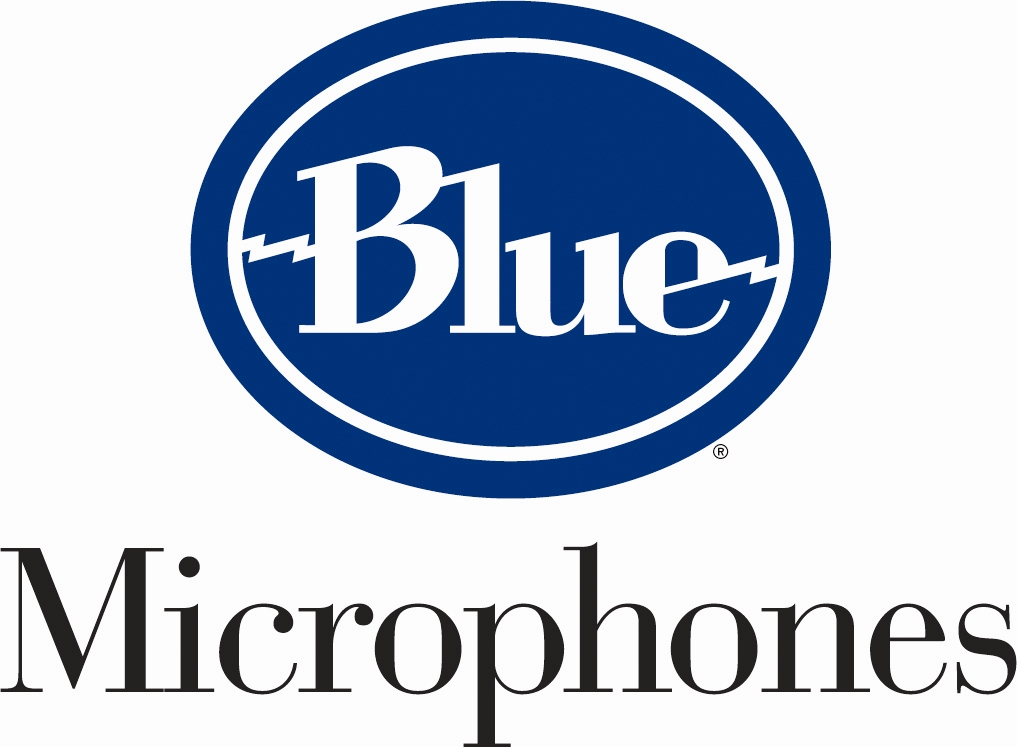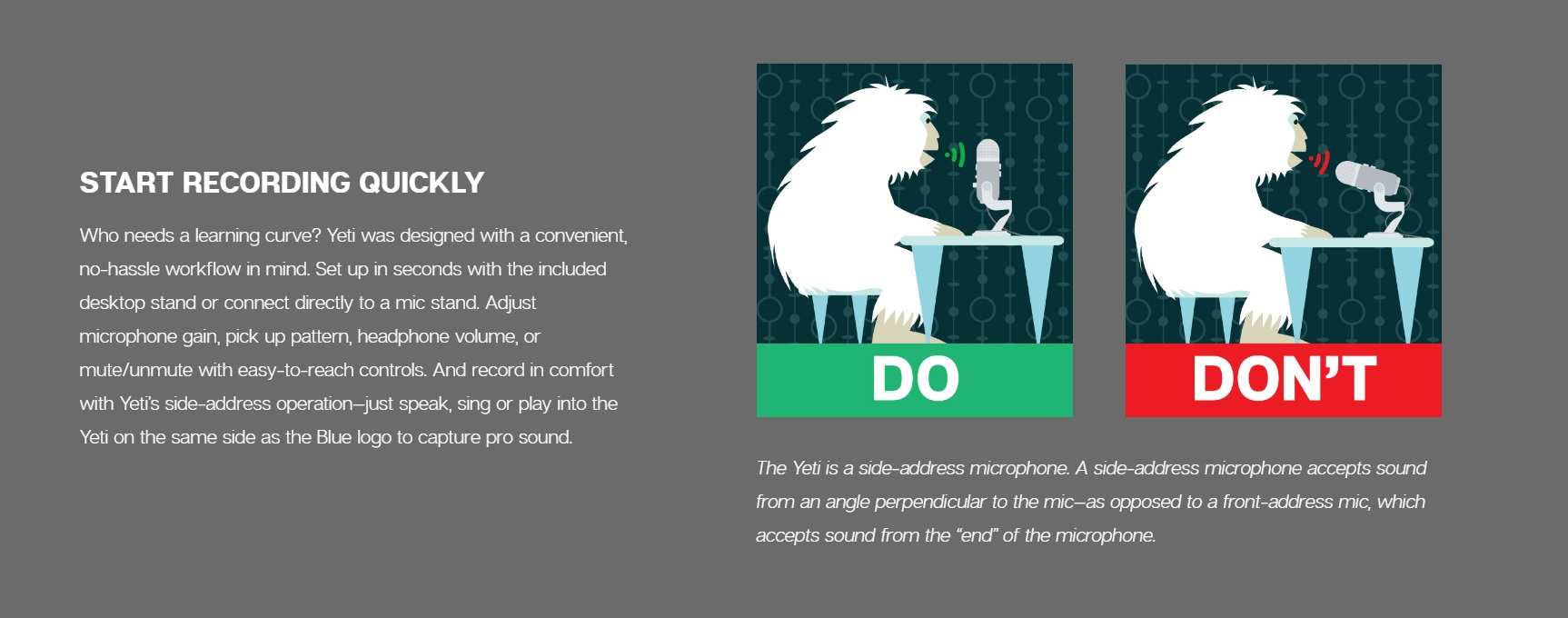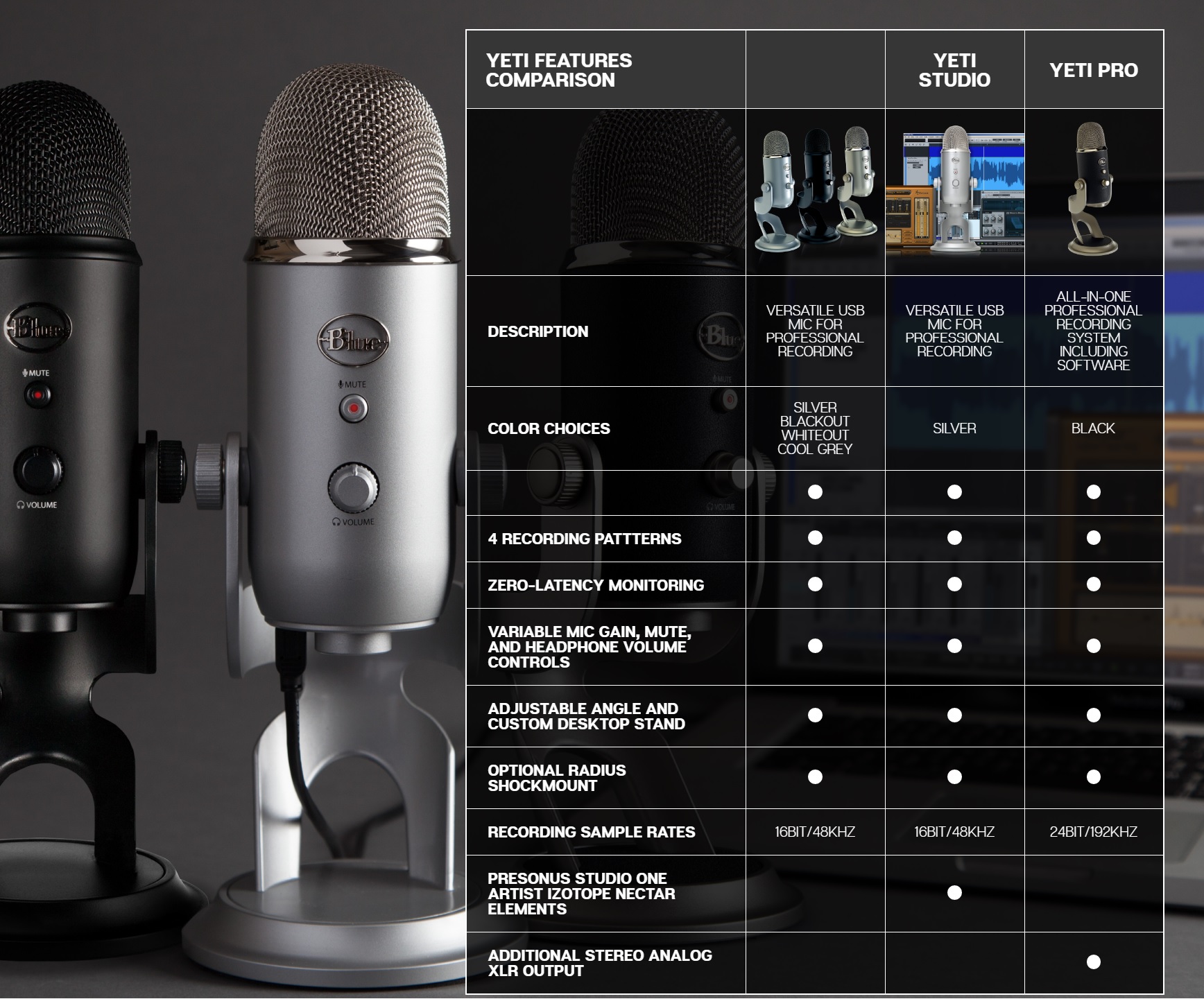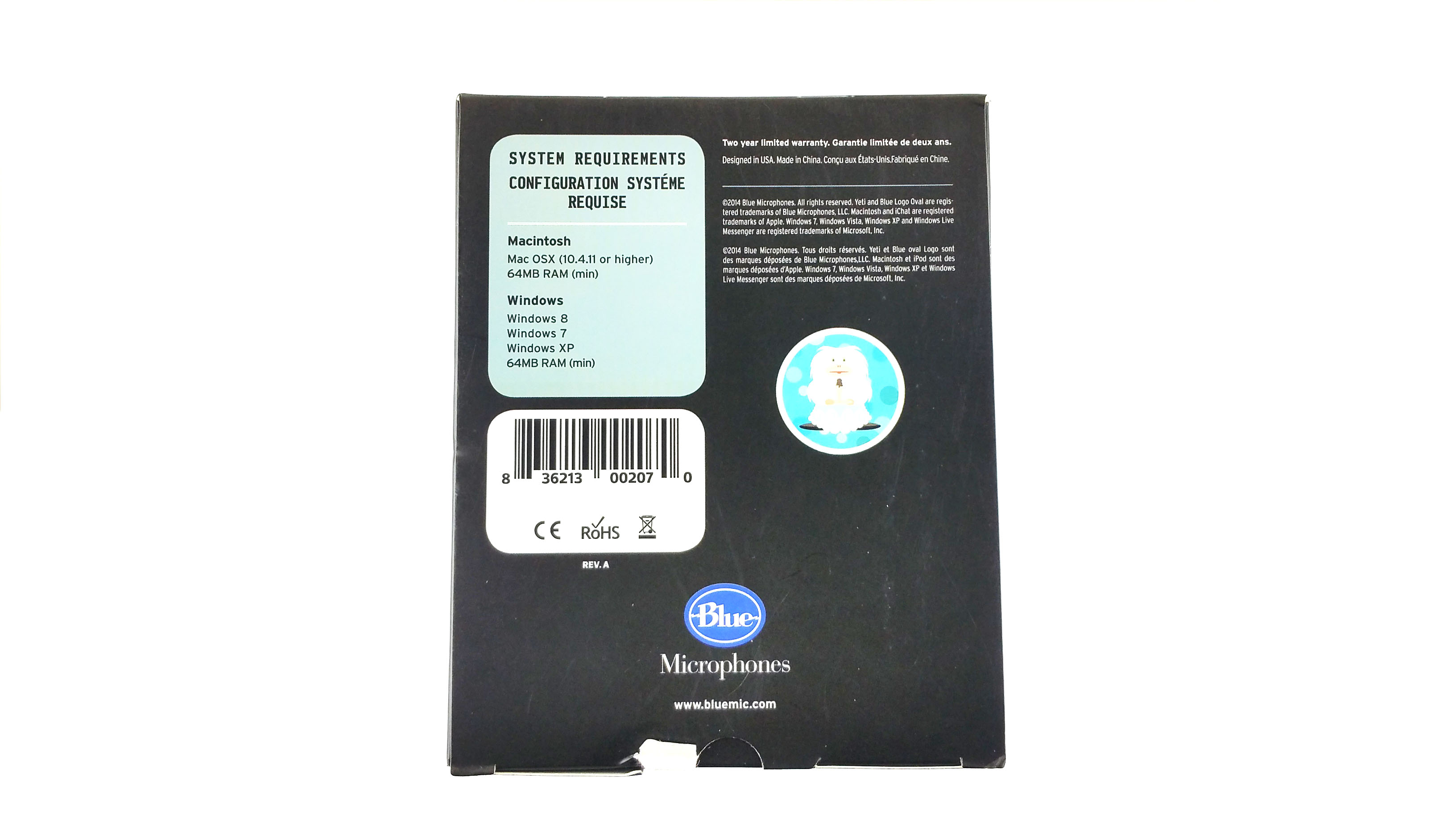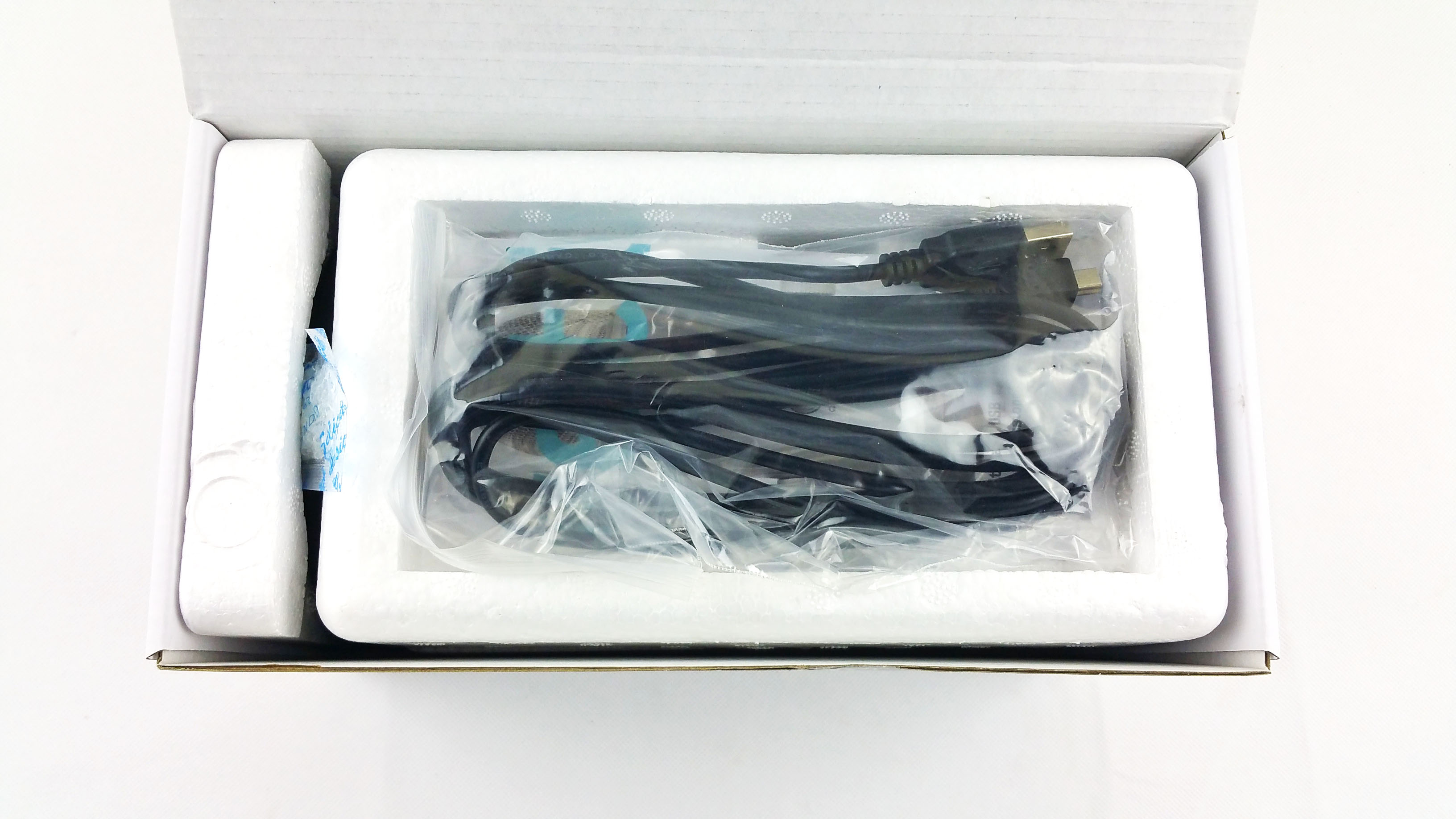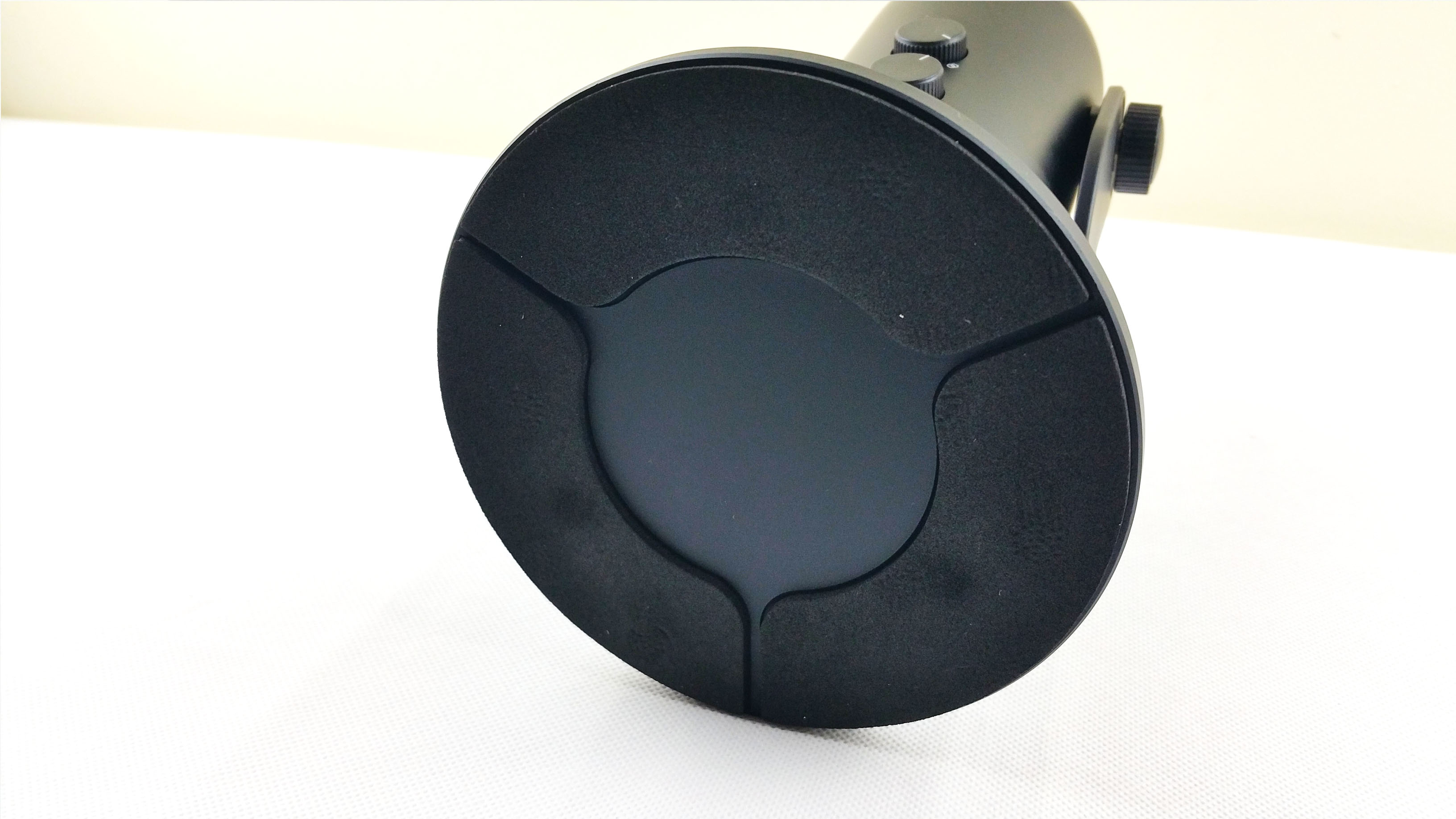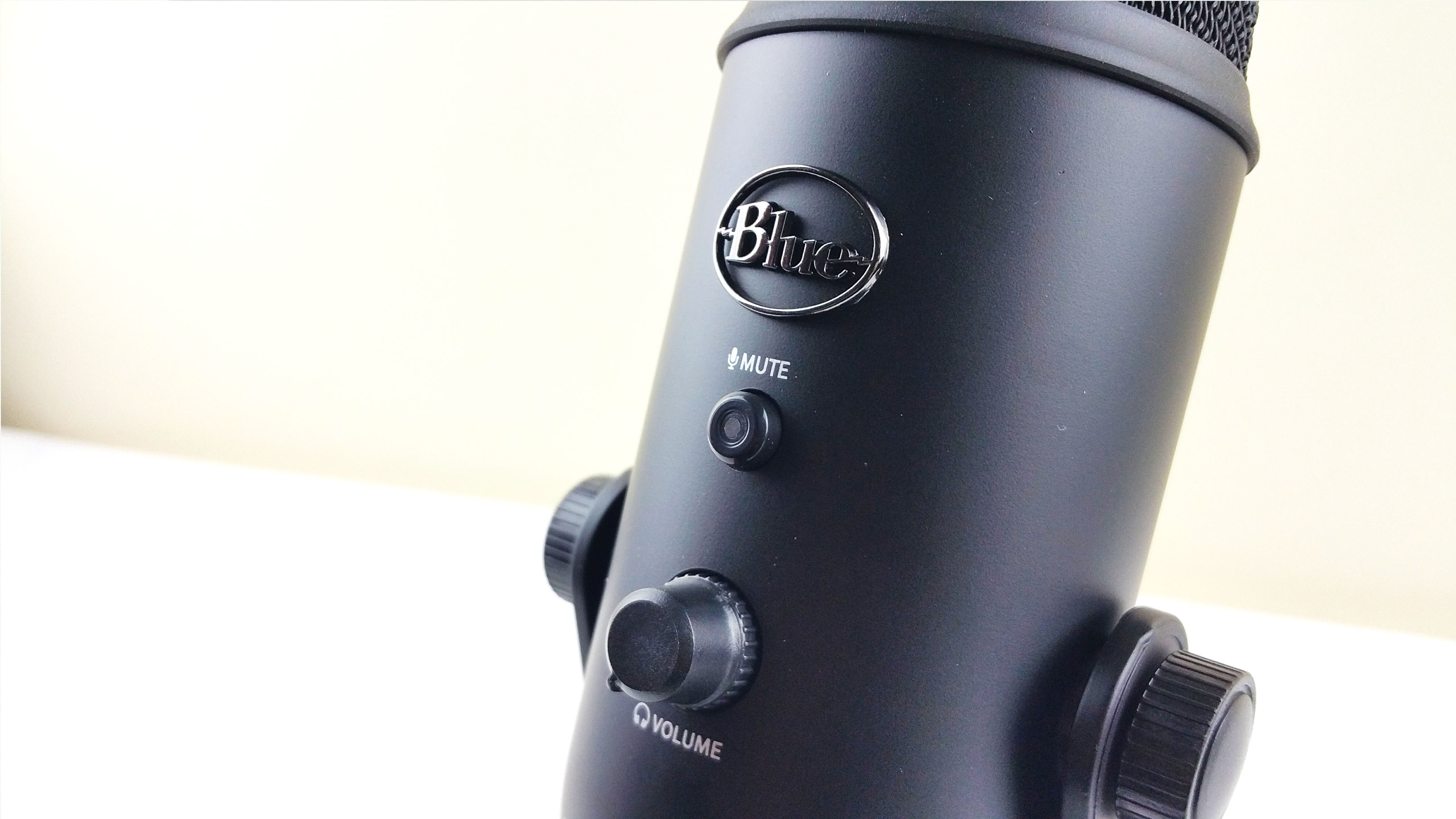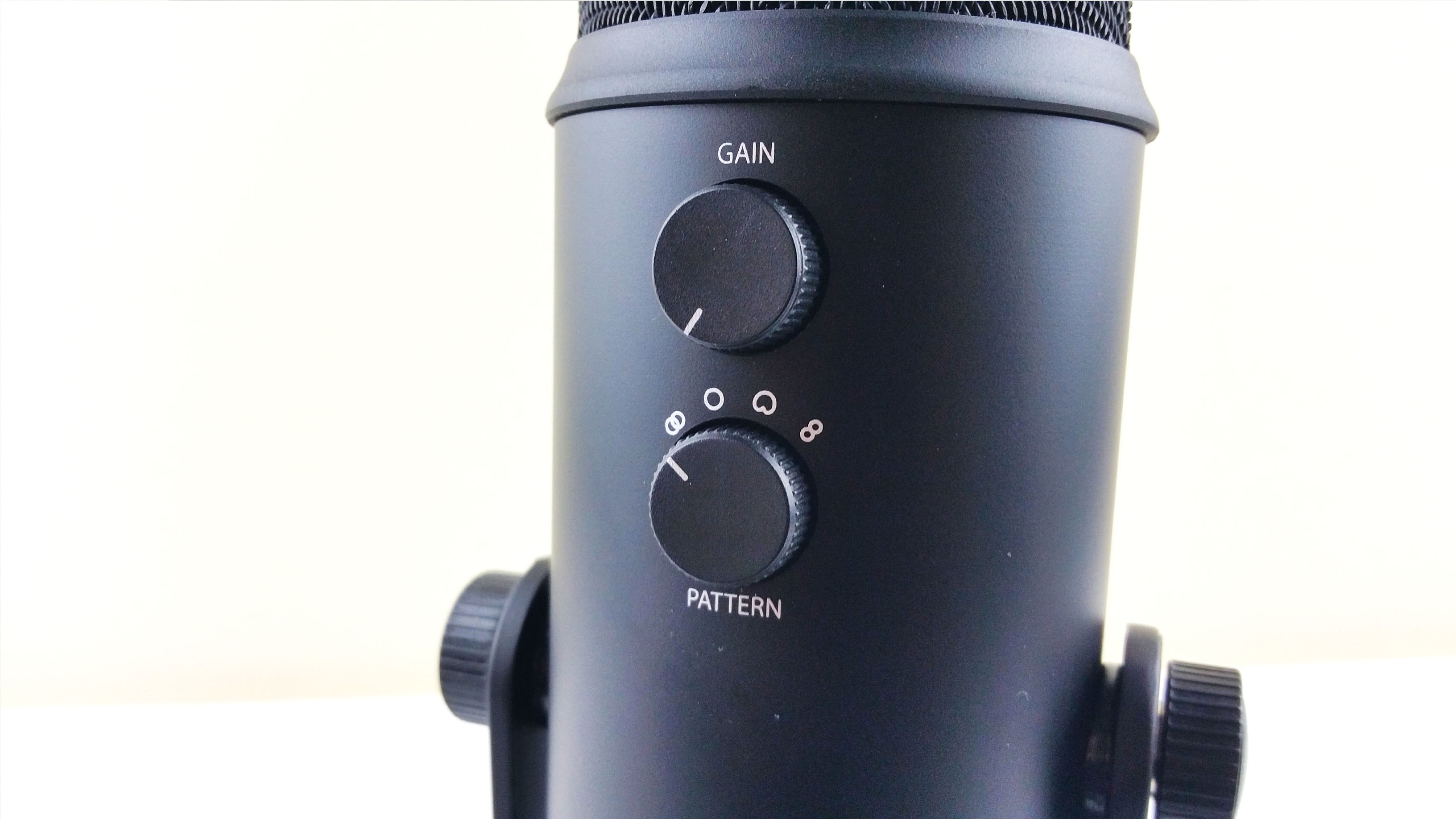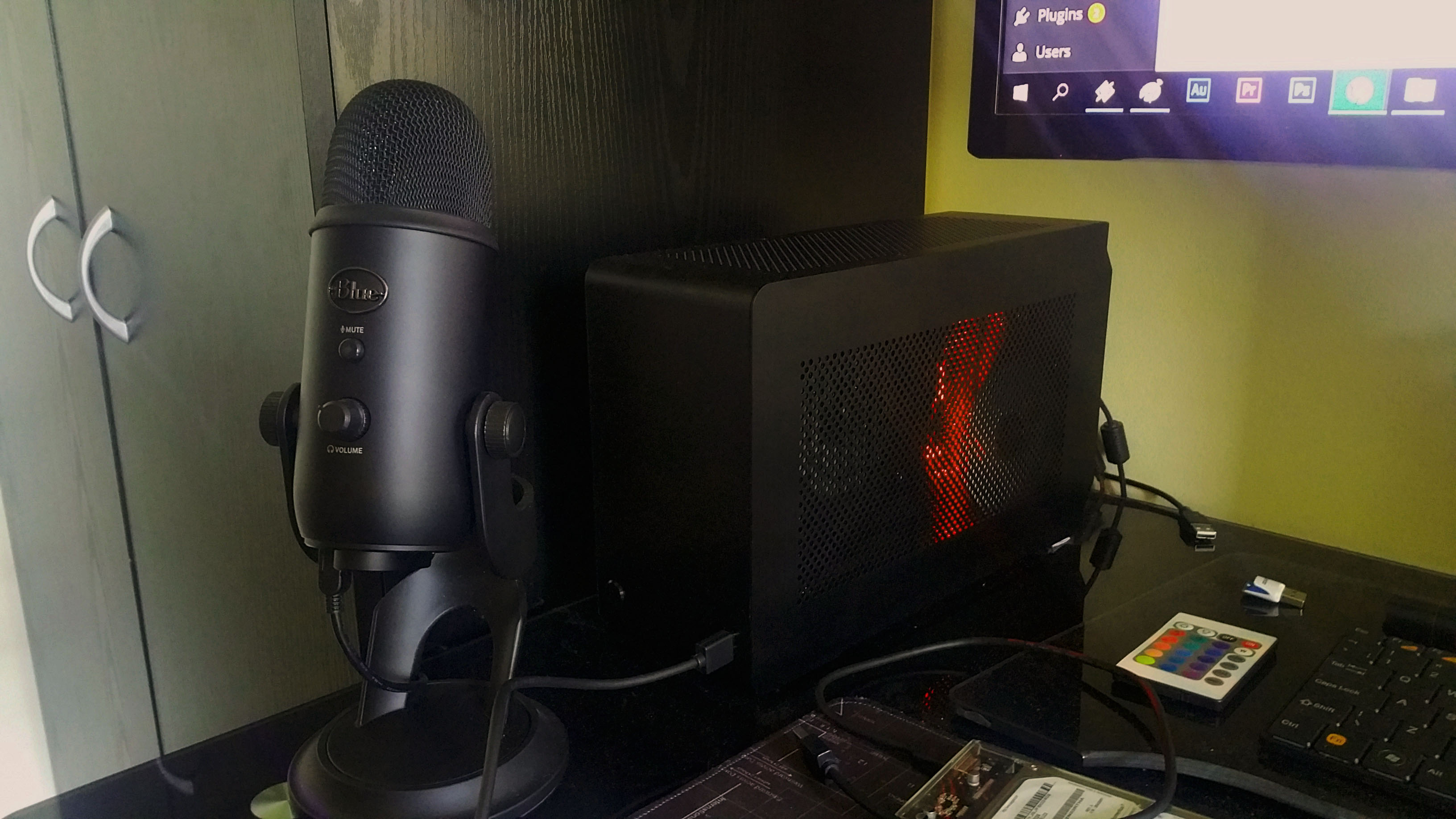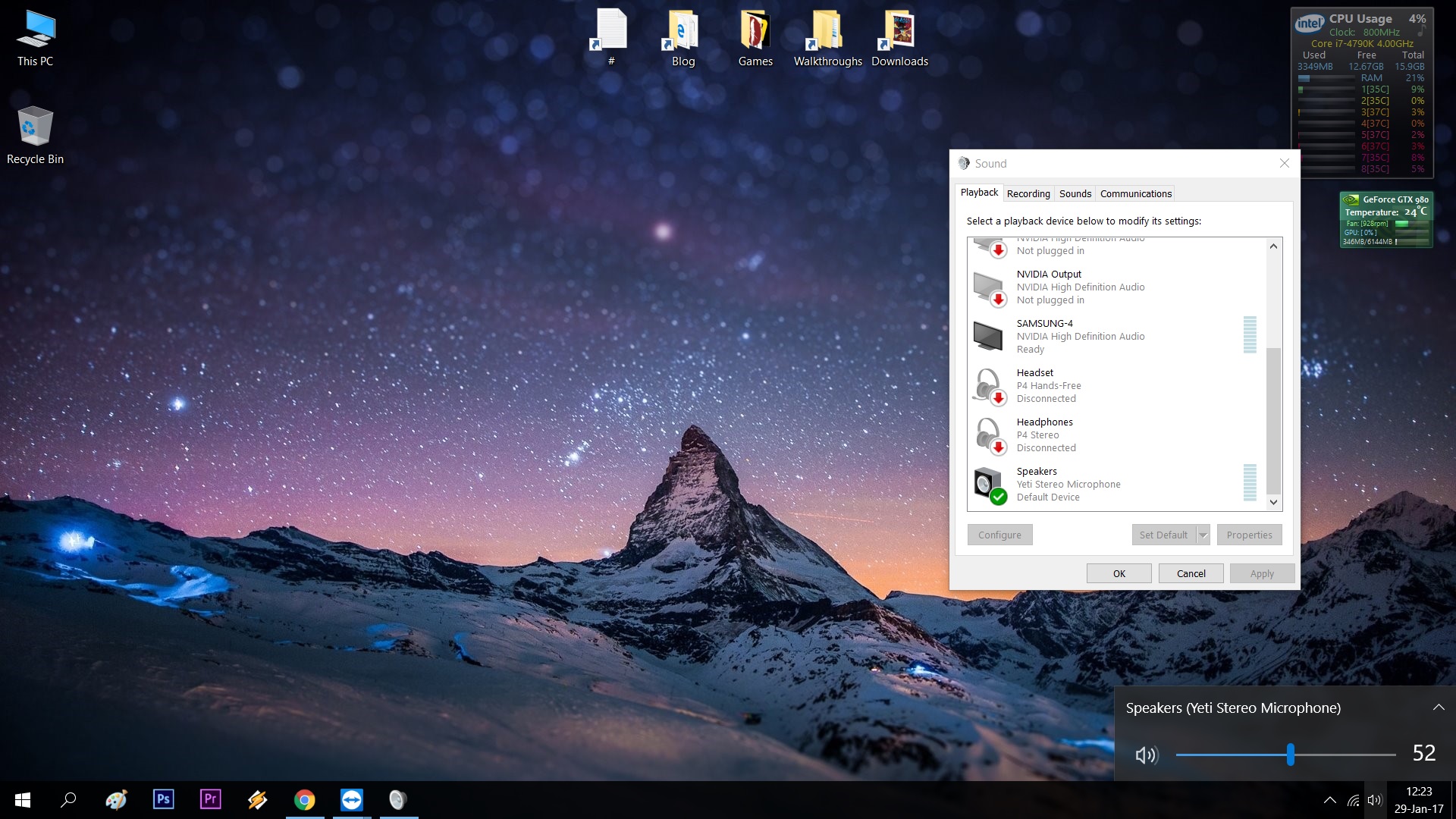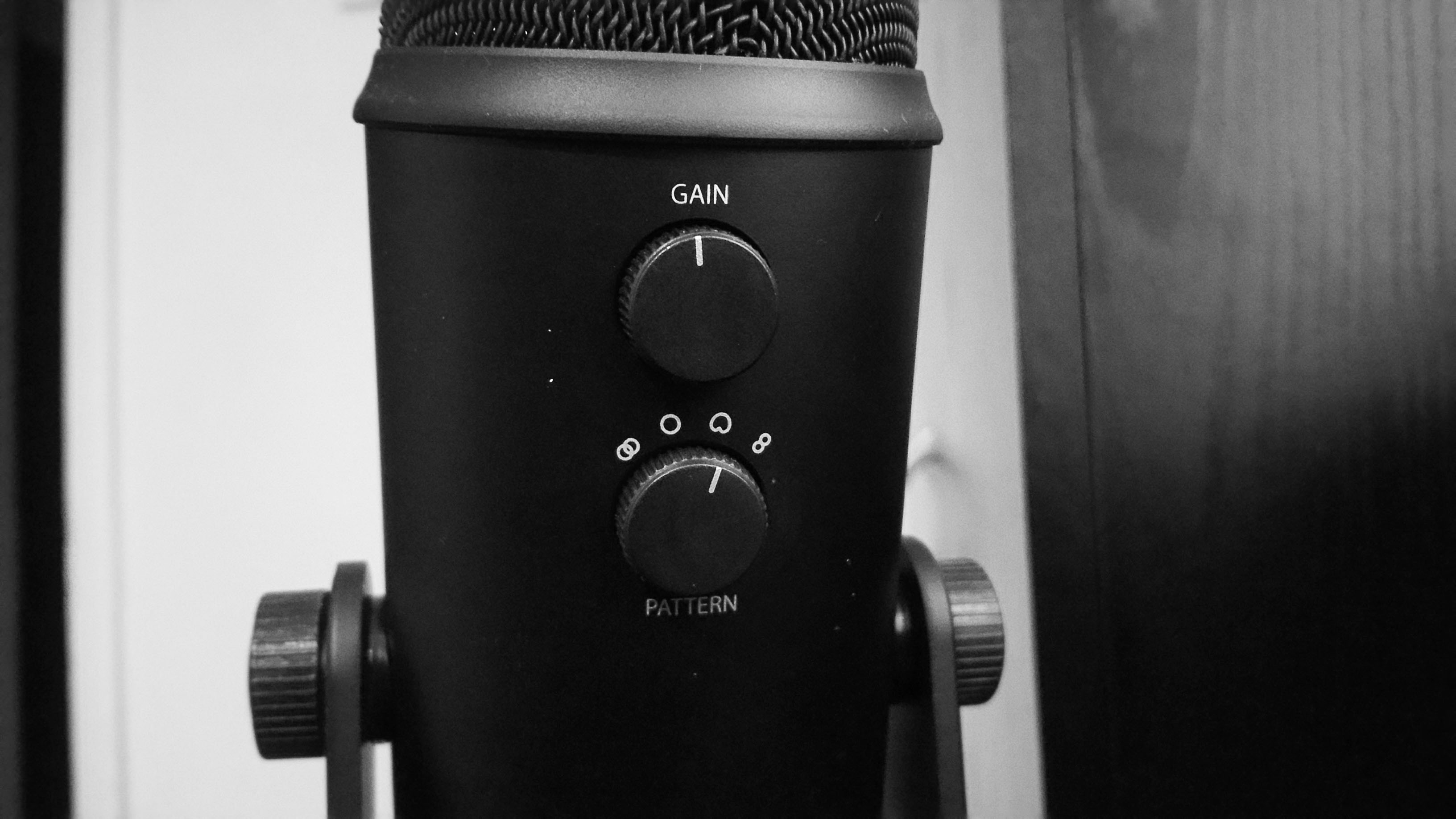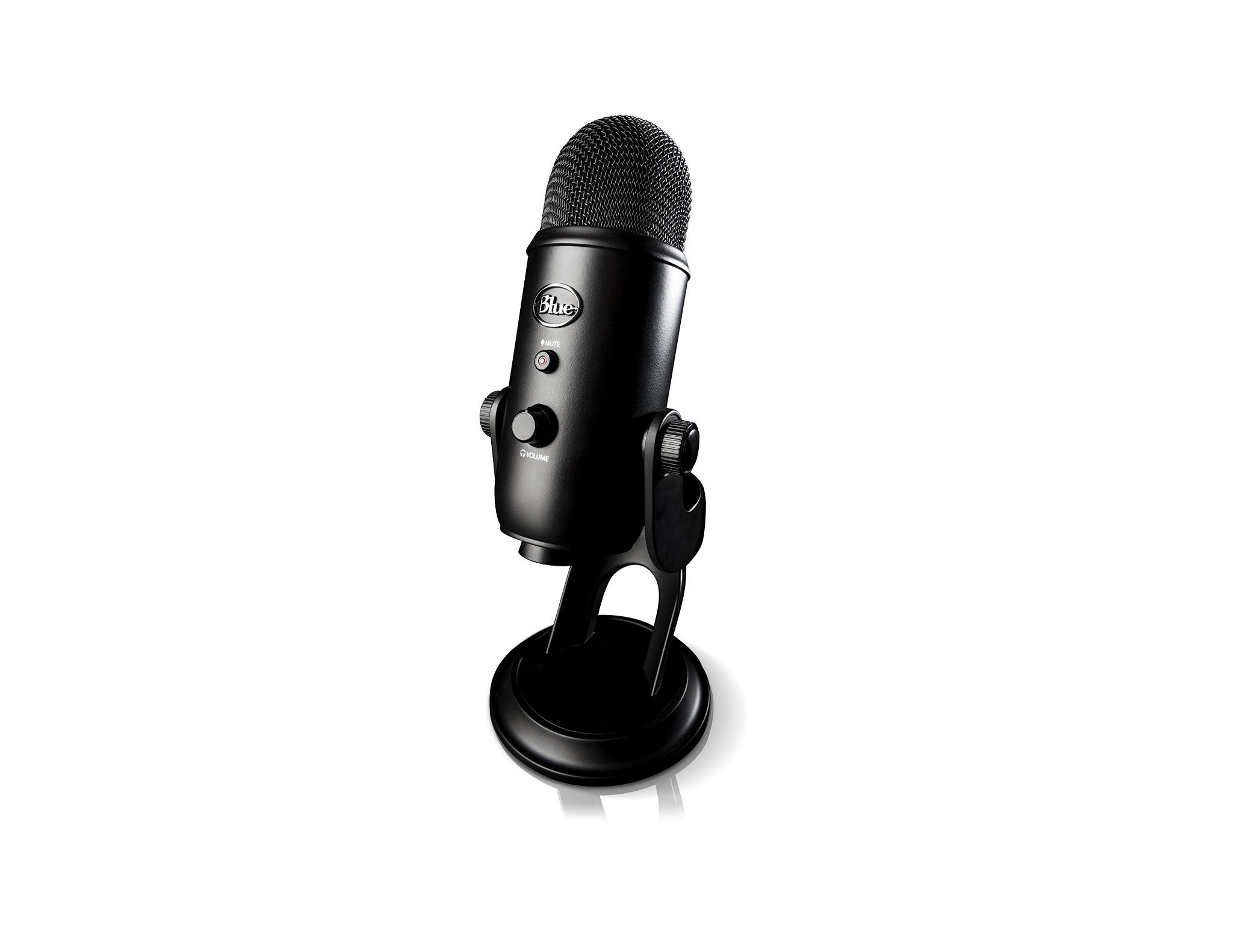
Fancying some late night karaoke? Or to record your own songs and get rich? Do you want to up your game in pod-casting? Be a more cool YouTuber? Then look no further than Blue’s Yeti USB microphone.
If you’re wondering why Blue would name its microphone after the mythical abominable snowman, then you should see the Yeti in person. This thing is bonkers huge. It measures a foot tall / 30 cm, weighs 3.5 pounds / 1.6 Kg, and makes most microphones look like kid’s toys. It has a full metal jacket 50s-style construction that lends an air of seriousness and charm.
This, as you will see is one hell of a tool. We liked I so much that this is our main mic for our YouTube videos. We needed something easy to use and set up and that offers superb recording quality. Our search ended with the Yeti. So our review will focus mainly for the purpose of voice-overs for YouTube. This is not a sample review so this as always an honest opinion without any outside influences or biased affecting the outcome of this review.
Scroll further please.
First about Blue :
Blue Microphones is an audio production company that designs and produces microphones, headphones, recording tools, signal processors, and music accessories for audio professionals, musicians and consumers.
It was founded in 1995 by an American session musician, Skipper Wise, and a Latvian recording engineer, Martins Saulespurens. The company’s name is an acronym for Baltic Latvian Universal Electronics with the headquartered in Westlake, California, United States.
Pricing and availability
*At the time of the review:
£ 119.99 – via Amazon.co.uk
Blue Microphones Yeti USB Microphone – Blackout Edition
$ 115.34 – via Amazon.com
Blue Yeti USB Microphone – Blackout Edition
Presentation and specification
*Courtesy of their website:
YETI – THE WORLD’S #1 USB MICROPHONE
Create unparalleled recordings with your computer using Blue’s best-selling Yeti family of USB microphones. Thanks to our proprietary tri-capsule technology, Yeti microphones produce pristine, studio-quality recordings with legendary ease. And four different pattern settings offer incredible flexibility so you can record vocals, music, podcasts, audio for video, interviews, or even cryptozoology lectures in ways that would normally require multiple microphones. Whether you’re recording at home, on the road, or in the Himalayas, Yeti helps you produce studio-quality recordings every time.
Really convenient option with the live listening to your recordings as you do them.
Plug and play is a real helpful commodity. Simplicity is the new sophistication, once Da Vinci said.
From here we learn that we need a Yeti costume for this to work properly. 😉
It comes in 3 main variants. We are reviewing the main standard one in the “Blackout Edition” flavor.
So as you can see the Yeti Pro is the “upgraded” version of the Yeti (On Amazon UK £ 239.99 / Amazon US $ 269.99) and thus offers both USB and XLR outputs. Additionally, the Pro is capable of recording a maximum resolution of 192kHz/24-bit whereas the Yeti is only capable of 48kHz/16-bit. So it is based on your needs.
Now back to the our Yeti, this has:
So with those out of the way, let’s unbox the monster.
Packaging and Visual Examination
The box has a very unique design as you will see. Here is a size perspective, near to a half a liter of energy drink.
The color palate for each box depends on what version of the Yeti your order. So the Blackout Edition, as in our case, has a predominate black background and theme.
On the other side we have a dictionary explanation for the fluffy monster and a lot of funny Yeti characters in various roles.
Here is a really good visual representation of all the features and controls.
Speaking of them, here are in a more in-depth explanation for the sound recording patters. We will tackle them later on, as well.
It needs really basic system requirements, thus you can’t go wrong there.
Let’s open up the Yeti.
One instruction manual and one miniUSB to USB 2.0 cable, which is very long at 10 feet / 3 meters.
And there it hibernates.
This is the closed packaging position and it rotates vertically.
These are the thumb tightening knobs.
And this is the Yeti in its standard potion.
First, on the bottom we find a miniUSB port for connecting the mic to your computer as well as a headphone output for use as zero-latency audio monitoring. The big threaded port in the middle is for attaching it to various holders and boom arms.
The bottom of the stand utilizes foam padding which helps it keep the microphone from slipping on a glossy surface as well as protecting your desk top and aiding in reducing vibrations.
Now on the front of we have the company emblem, the “Mute” button with a notification LED in the middle and the volume control for when you will attach headphones.
For the top, the Yeti has a metal mesh cover. Again, besides the knobs, everything is made out of metal.
And finally, for the most important part, the pattern modes. From left to right:
1. Stereo – Self explanatory – perfect for realistic sounding recordings like a choir.
2. Omnidirectional – From all around the mic – suited when there is a multiperson podcast.
3. Cardioid – records only sound coming from the front – like voice-overs, podcasts etc.
4. Bidirectional – will record only at opposite ends – ideal for an interview for example.
Installation
Step 1 : Plug the Yeti in any free USB port on your PC/Laptop.
Windows will take care of the rest. It appears as a “Speaker” because you can listen to yourself as you record if you insert some headphones via the 3.5″ audio jack on the Yeti.
Step 2 : Done
Notice that when plugged in, there is no ON/OFF switch and the red light appears in the center of the “Mute” button, indicating that it is ready to rock’n roll. If it flashes, means that it is muted. Just press it to unmute.
So every time you want to close the Yeti, you have to either remove the USB cable or press the Mute button to be sure that it is not live. Minor inconvenience but worth mentioning.
Testing methodology
Since we are not musicians, we will use the Yeti as per our needs. As mentioned before, for voice overs for YouTube videos.
We set the “Gain” to almost the middle position – where the letter “A” is.
And the pattern knob to “Cardioid” mode, so it will focus only on the sound that comes from the front area.
We recorded via Adobe Premier Pro and exported without modification the RAW sound files.
As for the testing hardware we used:
This PC, where the Yeti was plugged in:
Processor: Intel i7 4790k
Cooling: Cryorig C7
Case: DAN A4 SFX mITX
Motherboard: ASUS ROG Maximus Impact VII Z97 mITX
RAM: 16 GB (2×8) Crucial Tactical Tracers @ 2133 Mhz LED
GPU:MSI GTX 980ti TFV 6G
SSD: M.2 Samsung 950 Pro 512 GB
PSU: Corsair SF600W SFX w/ semi-fanless operation
Comparison microphones – both placed at 10 cm distance from the speaking subject:
– Lavaliere: X Play Store Lapel microphone UK Amazon | US Amazon
– Built in mic: Samsung Galaxy Note 4 – N910F
Software:
– Windows 10 Pro x64 Build 1607
– Adobe Premier Pro CC 2015.4
Results & Audio Samples
*Here are the samples in one video. Again, untouched, no audio gain, no noise reduction or modifications of any kind.
Analysis
Right off the beat as you heard for yourselves, there is no comparison regarding clarity, crispness and overall sound quality when comparing the Yeti to the others.
Unfortunately we didn’t have any other USB standalone microphones to test it against but a quick search will reveal that all other reviews claim and discovered the same thing: the Yeti is truly a wonderful piece of tech given what it offers for the price.
Conclusion
Without any shadow of doubt the Yeti is one of the richest sounding, sonically flexible USB microphones money can buy. Whether you’re recording an interview, screaming on Twitch, or a concert, the Yeti’s THX-certified sound quality, integrated gain control, and four recording modes makes it a no-brainer choice, when renting or creating a professional studio is out of the question.
The good:
+ Fantastic audio recording quality – THX Certified
+ High build quality – a “full metal jacket” for an overbuilt doctrine
+ Epic versatility – multiple recording patterns
+ Includes an adjustable stand
+ Plug and play – no drivers or extra software required
+ Probably the best USB microphone (non-XLR) out there
+ Variety of colors to choose from
The bad:
– Not that portable, because it’s big and heavy
– Should have made the knobs also from metal but that’s our OCD talking
– You need to be somewhat careful with the MiniUSB plug
– Should have put an ON/OFF switch


